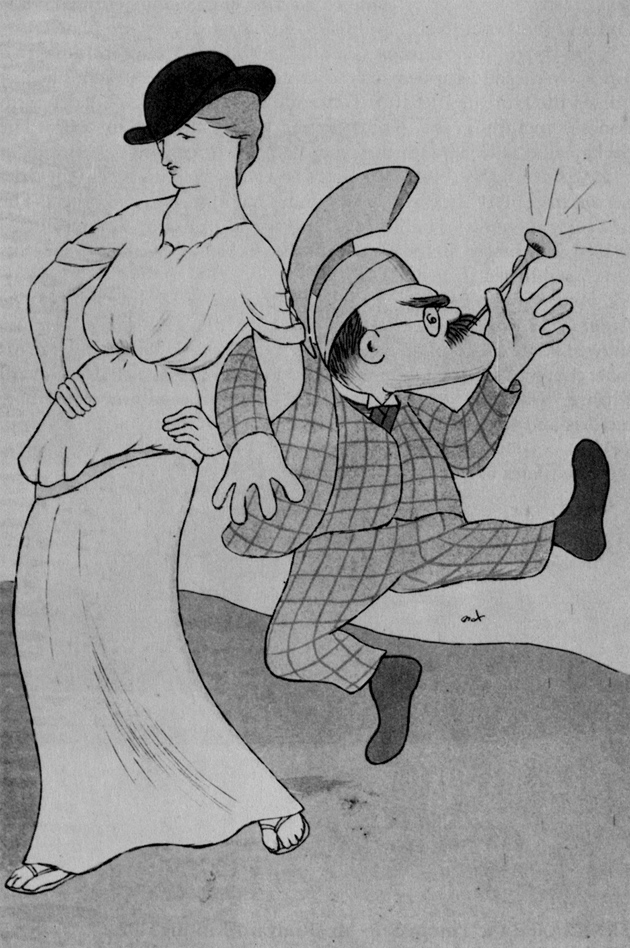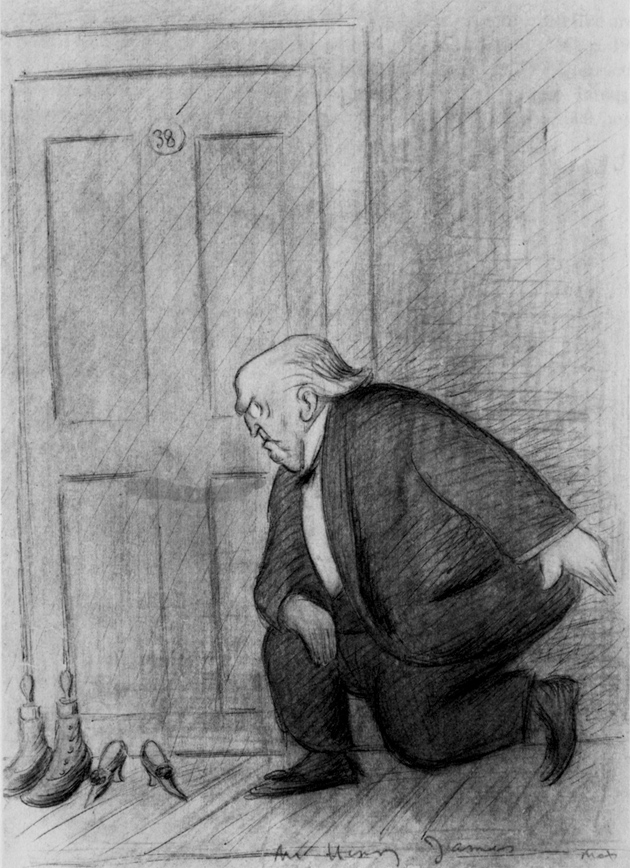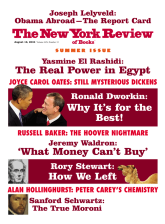It’s hard to say which are more remarkable, the inflated ambitions of this enormous book, its actual achievements, or the perversities with which the author has undermined them. An admired academic—Emeritus Lord Northcliffe Professor of Modern English Literature at University College London and former longtime faculty member at the California Institute of Technology—and a widely read literary journalist, John Sutherland has set out to give us the Lives of the Novelists (English-language novelists, that is). Or as he puts it in his subtitle, “A History of Fiction in 294 Lives.” The self-congratulatory nod to Samuel Johnson’s magnificent Lives of the English Poets is as embarrassing as it is presumptuous.
Sutherland’s vast previously published work is strangely uneven. There are his popular columns in The Guardian that pose ingenious literary puzzles and then solve them with tough research combined with informed intuition: “Is Heathcliff a Murderer?” “Where Does Fanny Hill Keep Her Contraceptives?” “How Does Mrs. Dalloway Get Home So Quickly?” And the question you may never have dared ask yourself, “Was Daniel Deronda Circumcised?” (George Eliot wasn’t telling.) One hundred of these are gathered together in an irresistible omnibus volume called The Literary Detective.
His biographies of Walter Scott and Mrs. Humphry Ward (to whom he refers all too frequently in Lives of the Novelists) are estimable (his biography of Stephen Spender less so). His useful reference book The Stanford Companion to Victorian Fiction (almost seven hundred pages) reflects the twenty years he tells us he spent compiling it while indulging in “the highly pleasurable task of reading some 3,000 novels.” Both here and in the new book you can discover such esoterica as Frank Danby’s Doctor Phillips, A Maida Vale Idyll, a best-selling anti-Semitic novel of 1887, about which Sutherland tells us:
The novel is remarkable for the viciousness of its satire on the English Jewish bourgeoisie…. It created a furore. Rather perversely, the Athenaeum read the novel as “a deliberate insult to the medical profession.”
We also learn that “Danby” was the pseudonym of Julia Frankau, who was herself Jewish, the mother of the novelist Gilbert Frankau, and the grandmother of the twentieth-century best-selling novelist Pamela Frankau.
Here too are such prodigies of productivity as L.T. Meade, who in 1898 alone, a typical year, displayed her versatility:
In Mary Gifford a woman doctor establishes a practice in the East End. In The Cleverest Woman In England a wife devotes herself so entirely to propagating the cause of the new woman that she ruins her marriage and dies of smallpox. Girls Of St Wode’s is a story of the new university-trained Girton and Newnham girls. In A Handful Of Silver the heroine Audrey refuses to marry the man she loves, because she is encumbered by her father’s debts. In On The Brink Of A Chasm a nurse Clara uses hypnotism to rescue a young baronet from a villain. The Rebellion Of Lil Carrington traces a hoyden’s career left as she is at fifteen in the care of a harsh aunt. In The Siren, the heroine is a socialist and nihilist ordered by her Russian masters to assassinate her own father.
Hats off to L.T. Meade, and to John Sutherland for exhuming her—and many others—from oblivion.
He has also written a sensitive and affecting account—The Boy Who Loved Books—of his growing up the son of an intrepid and loving but careless mother who abandoned him for long stretches of time to uncaring relatives and institutions. Somehow this bright, lower-class boy found an education and a calling, but the scars remain: not only in the alcoholism about which he writes in another memoir, Last Drink to LA, but in the occasional expression of resentment at the kind of Oxbridge education he was denied (he went to Leicester) and a more masked resentment of various kinds of authority, most importantly, in regard to Lives of the Novelists, his skirmishes with the authority of the canon.
A constant aim of his work is the promotion of what he calls “popular fiction.” He’s an impassioned votary of science fiction and hard-boiled pulp fiction—hardly a revolutionary stance these days, yet he writes about them as if they’re still sad stepchildren whom it’s up to him to rescue. In his short and completely unsatisfactory preface, he writes, “The reader may be shocked by encounters with a number of writers not normally granted entry to the sacred grove” and “I confess that I do value a range of fiction that literary history has often, in my view, wrongly undervalued.” Note both the tone (again) of self-congratulation and the antagonism toward the established canon. Later, he tells us that Elmore Leonard is “the greatest American novelist never to be mentioned in the same breath as ‘Nobel Prize.’” Wake up, Professor Sutherland, Elmore Leonard has been a literary hero for a long time; if anything, he’s overrated rather than ignored. In fact, one of the problems with Sutherland’s book is that it’s so out of date. His science-fiction heroes, for instance, are mostly all old-timers who are less interesting than some of their brilliant current successors, with whom he shows no familiarity. Here and elsewhere he’s stuck in his own time frame. (Sutherland was born in 1938.)
Advertisement
In the same way, proclaming that certain children’s book writers deserve notice, his argument for the ones he includes is that “I could not bring myself to exclude” them. He did bring himself to exclude Lewis Carroll (!) though not L. Frank Baum and Kenneth Grahame. Roald Dahl fails to make the cut, although he was undoubtedly the most successful and original writer for children during the second half of the twentieth century. Sutherland, however, didn’t grow up on his work.
Which brings us to the crucial question: Why certain lives and not others? In the preface Sutherland tries to sidestep a basic problem, which is that his title promises a kind of comprehensiveness that his book fails to deliver. From carelessness, contrariness, or sheer running out of time and space (the book is already over eight hundred pages long), he has omitted dozens of important writers his title implies we’re going to hear about, and has included dozens more of no significance whatever except that he knows about them.
Here are some major names of the past for whom he has no time: Smollett, Kipling (yes, a novelist as well as the greatest of all British short-story writers), Harriet Beecher Stowe, Thomas Love Peacock, William Dean Howells, Galsworthy, Cather, Sinclair Lewis, Dos Passos, Thomas Wolfe, Ford Madox Ford. His attempt to explain away such omissions is feeble. Why are “some great names” missing from the book? “I offer two excuses: first, quarts and pint pots; and second, isn’t this book big enough?” Quarts and pint pots? And couldn’t the book have fit into its current hefty length by dropping scores of his marginal figures and replacing them with names that matter? He’s brushing us readers off in his race to the finish line.
In the field of popular fiction, of which he sees himself as a beset champion, we get old British hacks like Peter Cheyney, Sapper, Leslie Charteris, Nicholas Monsarrat, Trevanian, Dick Francis, but not the immensely superior John le Carré—or, for that matter, P.G. Wodehouse. And when he goes back to the early twentieth century in America he doesn’t indicate that the biggest sellers of all were Gene Stratton-Porter (A Girl of the Limberlost, Freckles) and Harold Bell Wright (The Shepherd of the Hills, The Winning of Barbara Worth).
In Frank Luther Mott’s Golden Multitudes (1947), a careful history of American best sellers until just after World War II, we learn that the writers with the greatest number of books read by at least one percent of the population were Dickens (sixteen), Scott (six), Erle Stanley Gardner (seven), James Fenimore Cooper (six), and Stratton-Porter and Wright (five each). And the novelist who was possibly the most widely read through the 1930s and 1940s was Lloyd C. Douglas—he too is among the missing, although his deadly dull The Robe (a novel of the Crucifixion) was among the top ten fiction sellers for three consecutive years. If Lives of the Novelists is meant to be giving us the finest writers of English and American fiction, these latter names are more than expendable. But if we’re talking about the most popular fiction, their exclusion is inexplicable.
When we get to more recent days, the mystery only deepens. Sutherland does a solid job discussing the dominant American writers of his own time: Cheever, Bellow, Updike, Roth. Here he actually digs in and has interesting things to say about the books. On the other hand, he makes a clean sweep of Africa-born women Nobel Prize winners: both Doris Lessing and Nadine Gordimer fail to make the grade. And when it comes to the most influential American writers of the current generation, he simply ignores them. You would never know from Lives of the Novelists of the existence of Thomas Pynchon, Don DeLillo, David Foster Wallace, Tom Wolfe, Jonathan Franzen. In their place, as the book drags to its end, is Alice Sebold—remember The Lovely Bones? And where, come to that, is the phenomenal Joyce Carol Oates; can her highly distinctive twenty-eight works of fiction have proved just too formidable a challenge for the man who ingested three thousand Victorian novels?
Unsurprisingly, Sutherland is heavily invested in the current brand of up-market trendy British novelists—Martin Amis, Julian Barnes, Ian McEwan, David Lodge (“the greatest comic novelist of our time”)—while he ignores Hilary Mantel, in my view the most consistently original and stimulating English novelist of our moment. (Forget Wolf Hall and pick up Beyond Black or Every Day Is Mother’s Day.) And where, speaking of original voices, is the late Penelope Fitzgerald? And those unique geniuses Ronald Firbank and Ivy Compton-Burnett? Instead, we’re offered second- and third-rated Americans and Britons like Louis Bromfield, Michael Sadleir, Rex Beach, Margery Allingham (though not Dorothy Sayers), Marilyn French, and Robert Shaw. Don’t bother checking them out.
Advertisement
Sutherland is absolutely right to appreciate the seminal pop writers of their day—Ouida, Marie Corelli, Arthur Conan Doyle, Zane Grey, Edgar Rice Burroughs, Agatha Christie, Jacqueline Susann, Stephen King—and I’m grateful to him for resuscitating Florence Barclay, who, although she hasn’t lasted, gave us, in her tremendous 1909 best seller The Rosary, one of my favorite heroines. The Honorable Jane Champion, after rejecting the man she loves because she is far too plain for this lover of beauty, rushes to his side after he is blinded, pretends to be a nurse, is recognized by him through her glorious singing of Ethelbert Nevin’s famous song “The Rosary,” and helps him morph from England’s greatest portrait painter (a hard act to keep up when you’re blind) to England’s greatest composer.
On the other hand, Sutherland’s judgment goes completely overboard when he rings in the likes of H. Bedford-Jones, “King of the Pulps,” amusing as it is to learn that among his hundreds of titles are All Quiet on the Tanker Front, The Blind Farmer and the Strip Dancer, and Bombs and Olive Oil, and that according to anecdote, when his wife once told a telephone caller that her husband was working on a novel, the man replied, “I’ll hold on until he’s finished.” A book devoted to characters like Bedford-Jones would be a treat, but does he really belong in the line of novelists that stretches from John Bunyan through Michael Crichton? (Does Michael Crichton himself belong in it?)
As for Sutherland’s text itself, it reveals every kind of valuation and approach. On the positive side are acute accounts of the history of such figures as the Brontës, Mrs. Gaskell, Mrs. Oliphant, Trollope, Conrad, Dreiser, and Booth Tarkington. These are models of compact biography, even if they’re stronger on the actual lives than on the work. But then when we come to Thomas Hardy there’s nothing in the entire five pages devoted to him that isn’t related to Hardy’s obsession with hanging: no mention of his being a major poet, nothing at all about the life or the books. As for George Eliot, Sutherland can barely disguise his disdain:
Two mighty winds are responsible for the de-dusting of George Eliot: 1. feminism, and its energetic search for female Shakespeares; 2. the rise of Ph.D.-sponsored “research.” What once looked like “dull” is now Arnoldian “high-seriousness.”
He even takes a swipe at her in his account of Owen Wister’s The Virginian, whose hero makes the “not inapt comment” about her that “she talks too much.”
What about the remark that “one would give all the acres of biography on Henry James for a hundred pages telling us more about [Stephen] Crane’s life”? What about the judgment that Anthony Powell left behind “a fictional sequence to rival Balzac’s”? Or that Arthur Koestler “should have won the Nobel Prize—twice at least”? As for his take on Aldous Huxley, it’s all Brave New World, The Doors of Perception, and gossip. You would never know that Huxley’s mordant satirical novels—Point Counter Point, Antic Hay, Crome Yellow—were the definition of literary sophistication in the 1920s and essential reading even twenty-five years later.
Silliest of all, how can Sutherland compare Melville’s Bartleby to Pooter, the hero of an amusing satire on lower-middle-class English life, Diary of a Nobody? In fact, he has no real sympathy for or understanding of Moby-Dick, instead concentrating, in his Melville essay, on the homosexual implications of Ishmael and Queequeg (ditto for Billy Budd, Claggart, and Captain Vere). First things first in Lives of the Novelists.
How can Sutherland claim that Eliza Linton is “a novelist of the first rank”? She was a minor literary figure in the Landor-Dickens circle, and her The True History of Joshua Davidson—“a work which sardonically recasts the gospel in a modern setting,” which I read on his warm recommendation—is a ludicrously mawkish account of a saint-like laborer who speaks and practices practical Christianity. (Linton had already appeared as “a novelist of the first rank” in Victorian Fiction, and Joshua Davidson as “a work which sardonically recasts the gospel in modern setting.” This kind of recycling helps explain Sutherland’s amazing output. Yet why not? He’s done the work: Why not serve it up again?)
Errors of judgment are complemented by errors of fact—a reference to Porgy and Bess as having “two Jewish composers,” and most bizarre, a reference to Joseph Brodsky as “the Nobel Prize–winning novelist.” Errors lie thicker on the page in his less than half-baked book Bestsellers. A sampling: Gentlemen Prefer Blondes was excerpted in Harper’s Bazaar, not The New Yorker; Lillian Smith’s Strange Fruit (1944) followed, not preceded, Billie Holiday’s famous 1939 recording; Not as a Stranger, the number-one fiction best seller of 1954, was by Morton Thompson, not Henry Morton Robbins. And the idea that H.G. Wells was never taken up widely in the United States is cuckoo: he had a tremendous readership and reputation here, even apart from his science fiction. For instance, his Mr. Britling Sees It Through was America’s best-selling novel of 1917, and his Outline of History was the top nonfiction book of both 1921 and 1922. What matters isn’t these particular mistakes but that Sutherland clearly has no background in this material and is bluffing his way through it, or relying on the inadequate research of others.
Lives of the Novelists was originally published, in England, by Profile Books Ltd., not necessarily a byword for textual scrupulousness. It was, however, picked up for publication in America by Yale University Press, whose reputation throws a blanket of respectability over whatever it publishes. (I’ve benefited from it myself.) Did any editor or copy editor even glance at the text before it was automatically reprinted from the British edition? A standard proofreading could at least have spared us the danglers (a single example will suffice: “Once read, one will never forget the rabbit…”) and the endless repetitions of superlatives like “huge” and “great.”
Most perplexing of all is Sutherland’s obsessive interest in the sex lives of his subjects. “Austen is to fiction what Elizabeth I was to the throne of England: a virgin queen. But did she not have sexual longings?” Benjamin Disraeli, “it is speculated, [may] have had homosexual moments in his youth.” Somerset Maugham’s appetite, one partner recalled, was ‘voracious’; his sexual demands ‘simple.’” How important to us is it to learn that J.B. Priestley “read H.G. Wells’s The History of Mr. Polly in 1910 and lost his virginity in 1913,” and that his “adult life was sexually athletic”? E. M. Forster is entirely considered through the prism of his sexual life. We’re told that “at prep school, a callous classmate yelled out: ‘Have you seen Forster’s cock? A beastly brown thing,’” but there’s not a single mention of A Passage to India. Why did George Orwell stay in the India Service for five years? “One’s suspicion is that it was the sex.” Much conjecture about the young Evelyn Waugh’s sex life. Patrick Hamilton? “There is some doubt as to whether, even sober, Hamilton was sexually robust.” And so it goes. Is this prurience? An attempt at titillating the public? (Is there a public ready to be titillated by the sexual practices of Patrick Hamilton?)
At times you wonder why Sutherland didn’t just call his book Sex Lives of the Novelists. Yet I can forgive him a lot of this in gratitude for the information that the formidable Oxford classicist Maurice Bowra was “a man whose genitals, one of his hero-worshippers later recorded, resembled the ruins at Delphi.” I’m still trying to picture it.
Note: I myself am mentioned in the entry on John Kennedy Toole. The little that’s said is off-target (and inoffensive), and if George Eliot and Melville can take it, so can I. At least my sex life goes unexamined.





